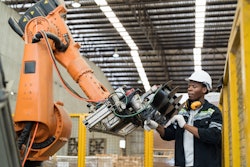
In the space of just over a year, artificial intelligence (AI) has gone from a nascent technology to one of the most talked about subjects in the food industry. Hundreds – if not thousands – of solutions have sprung up recently, leaving many food suppliers feeling overwhelmed and unsure about how to sort hype from legitimate value. What’s more, given the industry’s low overall level of digitalization relative to other sectors, considering an AI solution can feel like an especially big leap forward.
While this transition might feel daunting and the options difficult to parse, this truly is a transformative technology with the power to drive massive improvements in everything from demand forecasting to inventory optimization to order management. Navigating the sea of AI service providers, choosing the right solution and getting up and running as quickly and smoothly as possible comes down to these four steps.
Identify your needs
Before even considering an AI solution, the first step is to sit down and assess your company’s greatest needs. Do a 2023 retrospective with your team – what were the areas for improvement? Hiring and/or staff retention? Product unavailability? Food waste? Customer churn? Price increases? Prioritize this list and identify the Top 1-2 areas where you’re willing to invest in technology to help address the problem. Knowing this will help quickly streamline the list of potential solutions and focus efforts on the areas that will drive the most value for your organization.
Develop a clear set of criteria
If you are considering multiple AI service providers, it will be essential to apply the same set of criteria to each one to ensure an “apples-to-apples” comparison. This is particularly true if multiple people within an organization are playing a role in this process – you’ll want a consistent set of questions that you can pose to each potential partner. Some things to consider:
● What does your current infrastructure look like? Will a proposed AI solution easily integrate with your existing software, systems and workflows?
● What is the average time for an implementation? Will it require a dedicated point person from your organization? What will be expected from him or her?
● What kind of training does the AI service provider offer for staff? Will a large change in workflow or behavior be required?
● What about ongoing support in the face of technical issues?
● What kinds of cost and/or time savings can you expect to see within the first six months? The first year?
● What kinds of case studies and/or customer references do they have? Are these companies similar in size and set up as yours? What kinds of outcomes did they see?
While you will want to adapt this list to your business’s needs, this last point is particularly important for every organization: AI service providers in your consideration set should have the kind of experience with similar companies that gives you the confidence that they understand your needs and can be a true partner along the way. Generalized AI companies trying to operate in the food supplier industry do not have the requisite knowledge to be successful.
Ensure a smooth implementation
AI implementations are not a one-size-fits-all process and timelines can vary based on the complexity of the solution, which is why it’s so important to get clarity upfront and set realistic expectations internally. As part of the implementation process, a good partner should help assess the quality of existing data and its applicability to their solution. They will help determine which components may need to be updated to better support their workflow and help choose new workplace solutions to ensure you are getting the best results. For example, if adopting a new AI-powered order management solution, this might include updating the voicemail provider to get the best sound quality and email forwarding.
They should also create a detailed timeline and work-back plan that includes scheduled check-ins with the lead account owner from their team, key milestones and when you can expect to hit them. The timeline should also specify how much time will be needed prior to onboarding for “pre-training,” in which their model trains on existing data to ensure that it is accurate once up and running. You’ll want a clear idea of how much product information they will need, in what format and how long it will take for their model to start accurately detecting patterns that will be useful for its optimal functioning.
They should also clearly outline a plan for employee training, including how many sessions will be needed, whether they will be virtual or in-person and who from your organization should attend. For many solutions, these early days are particularly important because the product will learn from employee inputs, making it especially critical that your staff understands how to use it. Early success with the staff ensures that the team will be bought into the overall solution and promote continued usage in the future.
Track key metrics
Post implementation, look back to the problem you originally set out to address to determine whether the solution is helping you progress toward your goals. Ideally, have some hard metrics to track like money saved, time saved per order and the number of error-free orders. A good partner should provide regular updates on these and any other metrics you agree upon at the outset of the engagement and share concrete plans about how to move them in the right direction.
The current pace of innovation can feel head-spinning at times, but it’s also incredibly exciting. The food industry has encountered a challenging few years, between staff shortages, inflation, supply chain issues and ever-increasing food waste, and AI holds the key to addressing most if not all of these problems. The businesses that are ahead of the curve in adopting AI technologies are the ones that will set themselves up for future resilience, success and longevity, while those who ignore this trend risk being left behind.


















